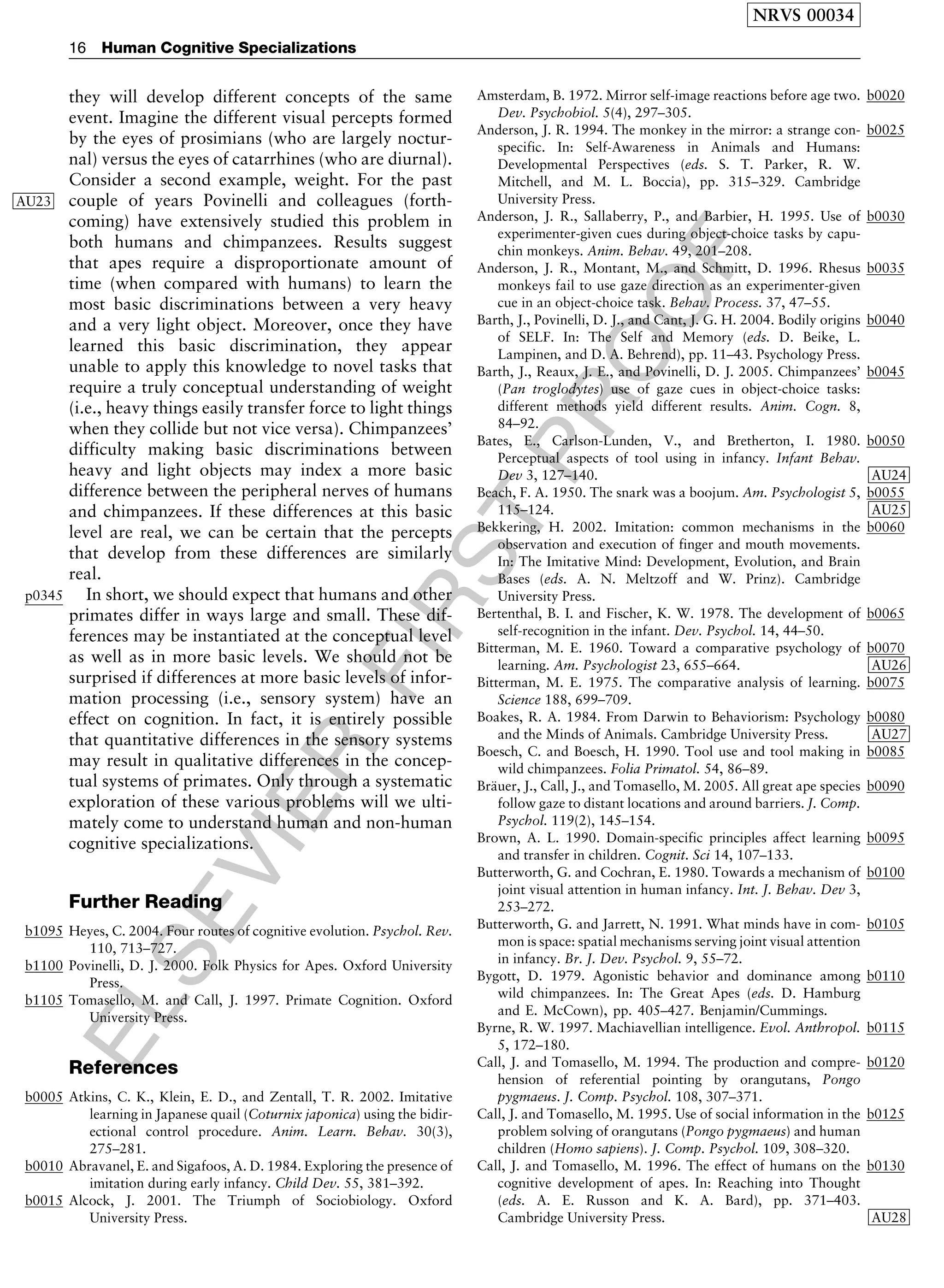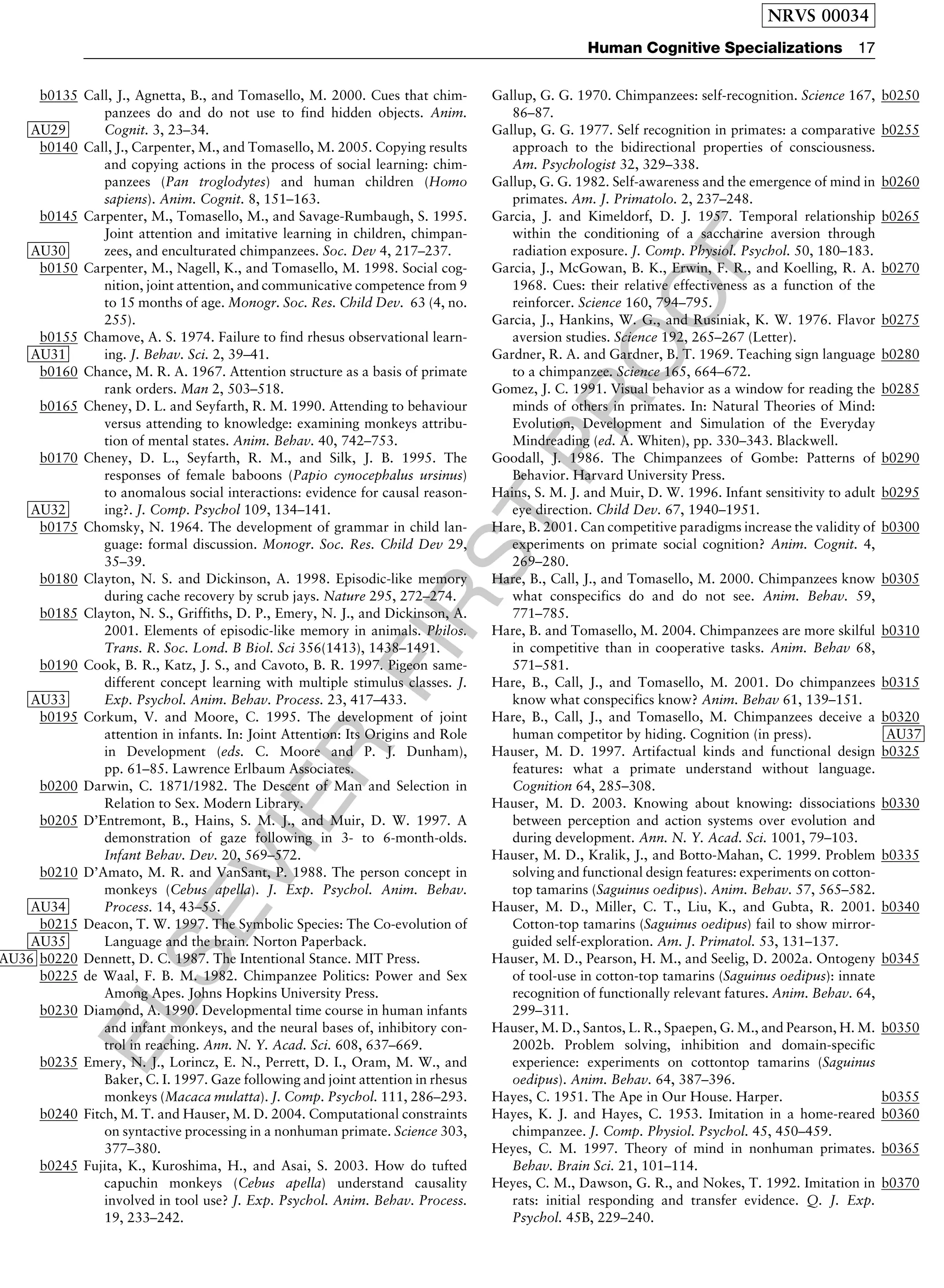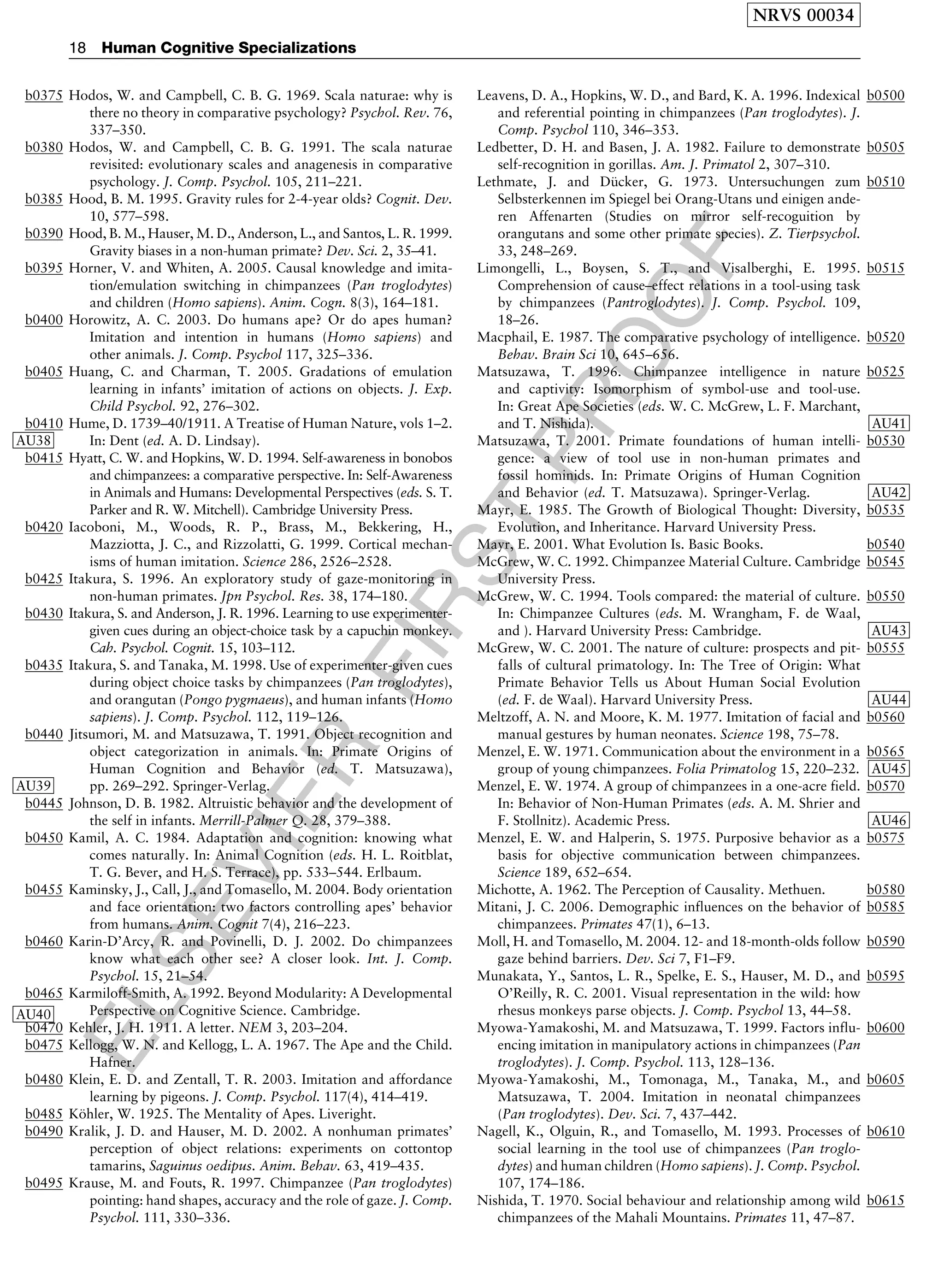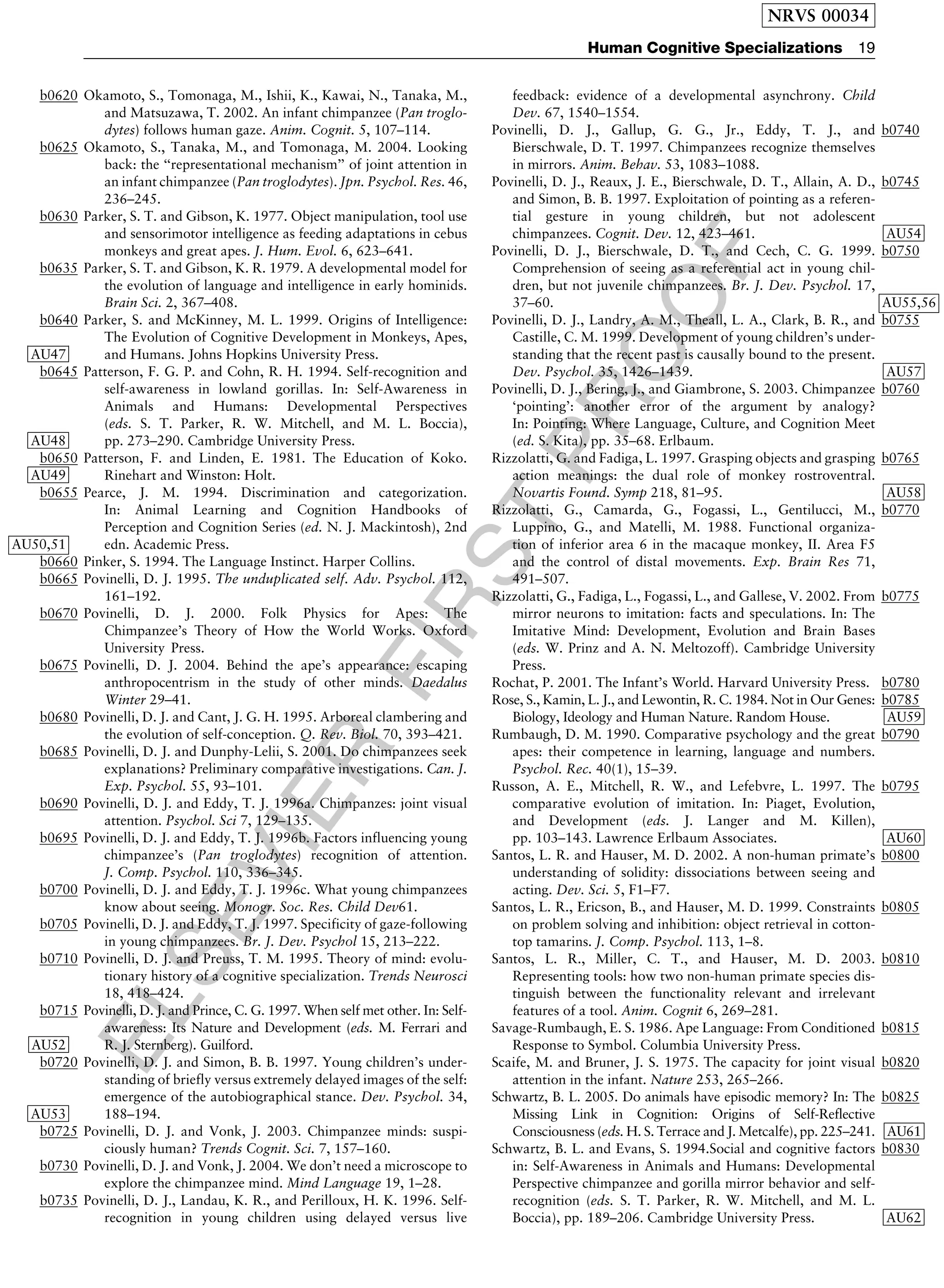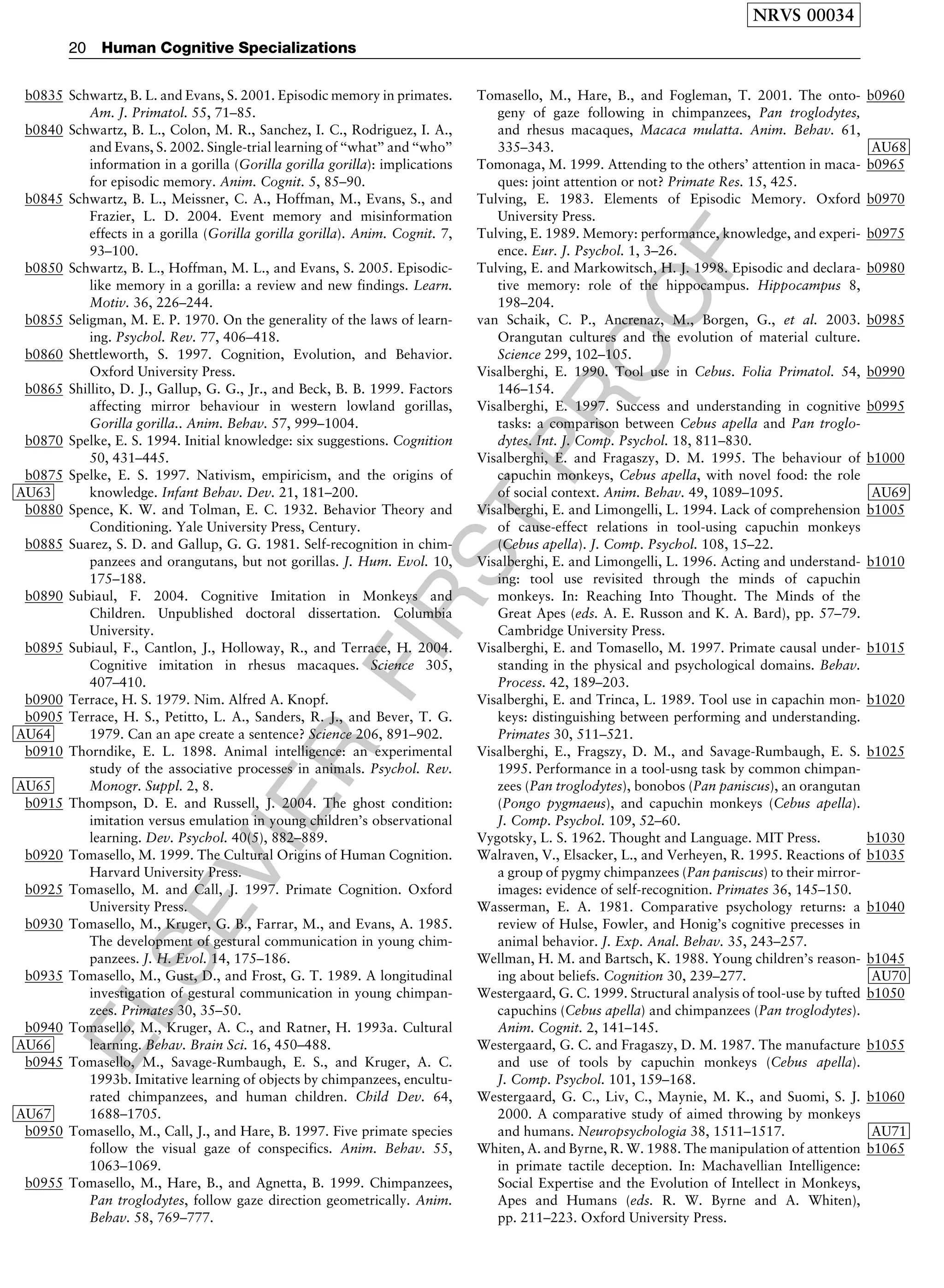The document explores the cognitive specializations of humans compared to non-human animals, focusing on theories of mind, self-awareness, social cognition, and physical cognition. It discusses the evolutionary aspects of human cognition, emphasizing the reinterpretation hypothesis that suggests humans are unique in their capacity to interpret observable behaviors in terms of unobserved psychological concepts. The findings indicate a significant cognitive differentiation in abilities such as mirror self-recognition and the processing of complex social and physical interactions.
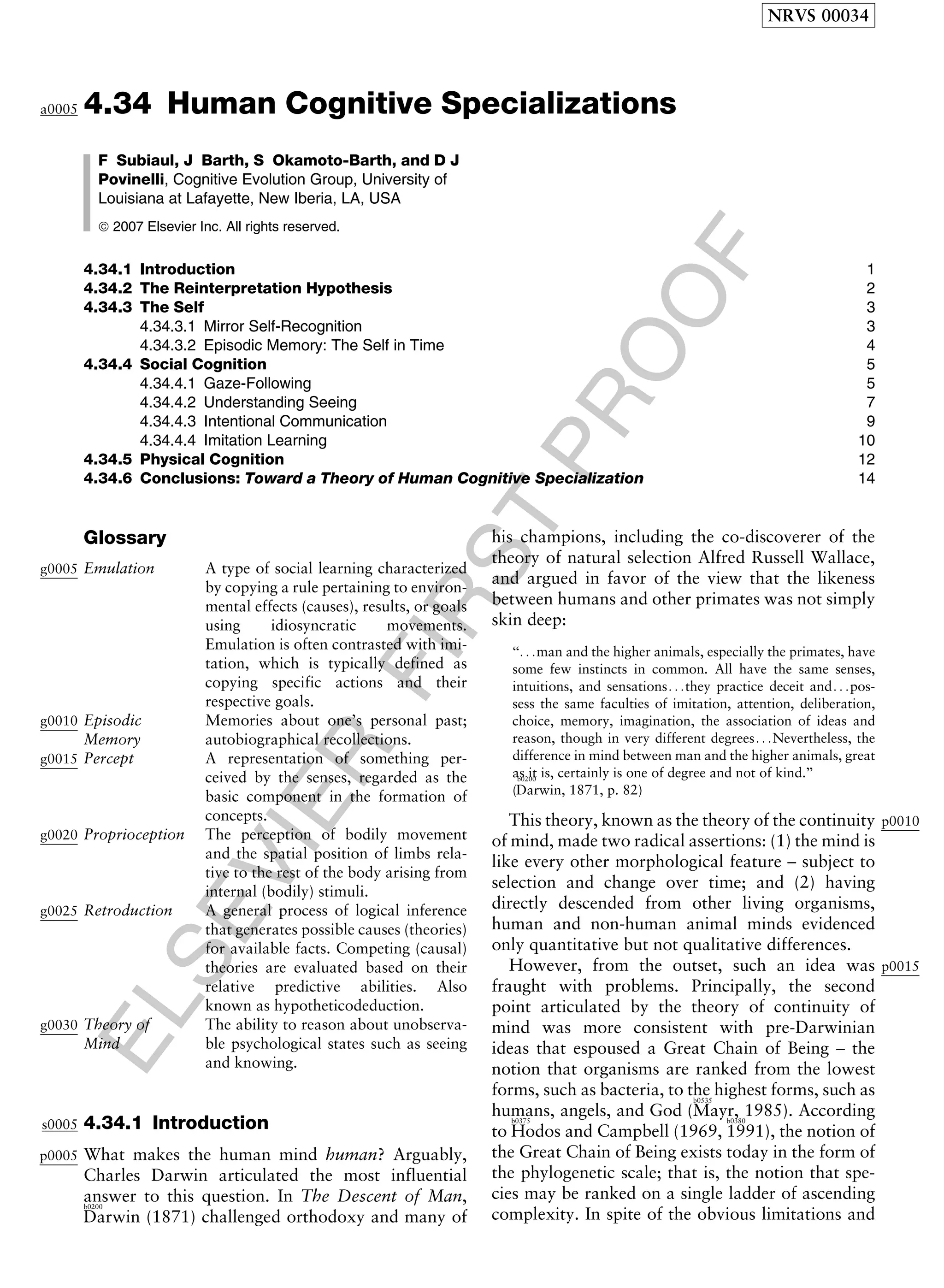
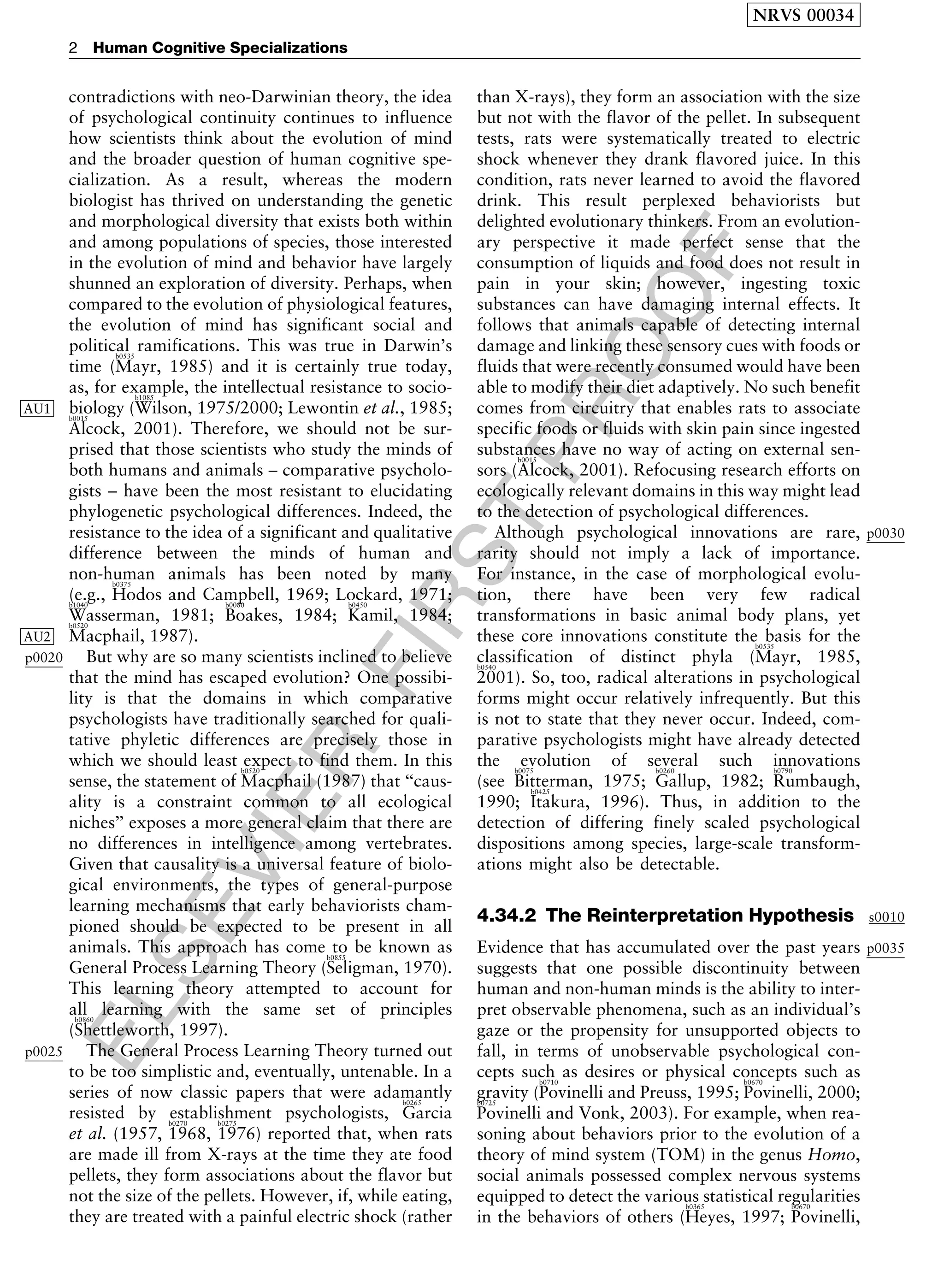
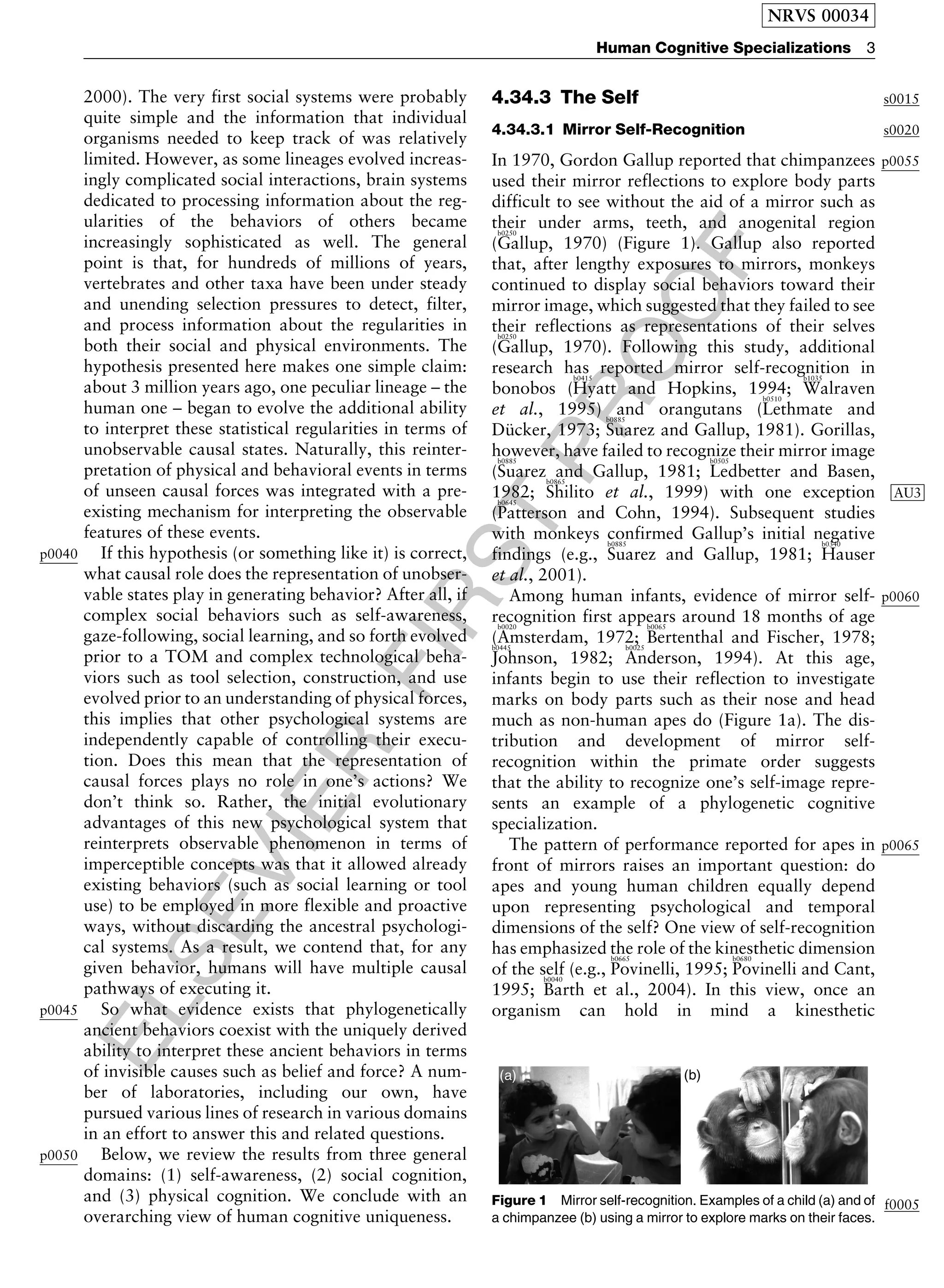
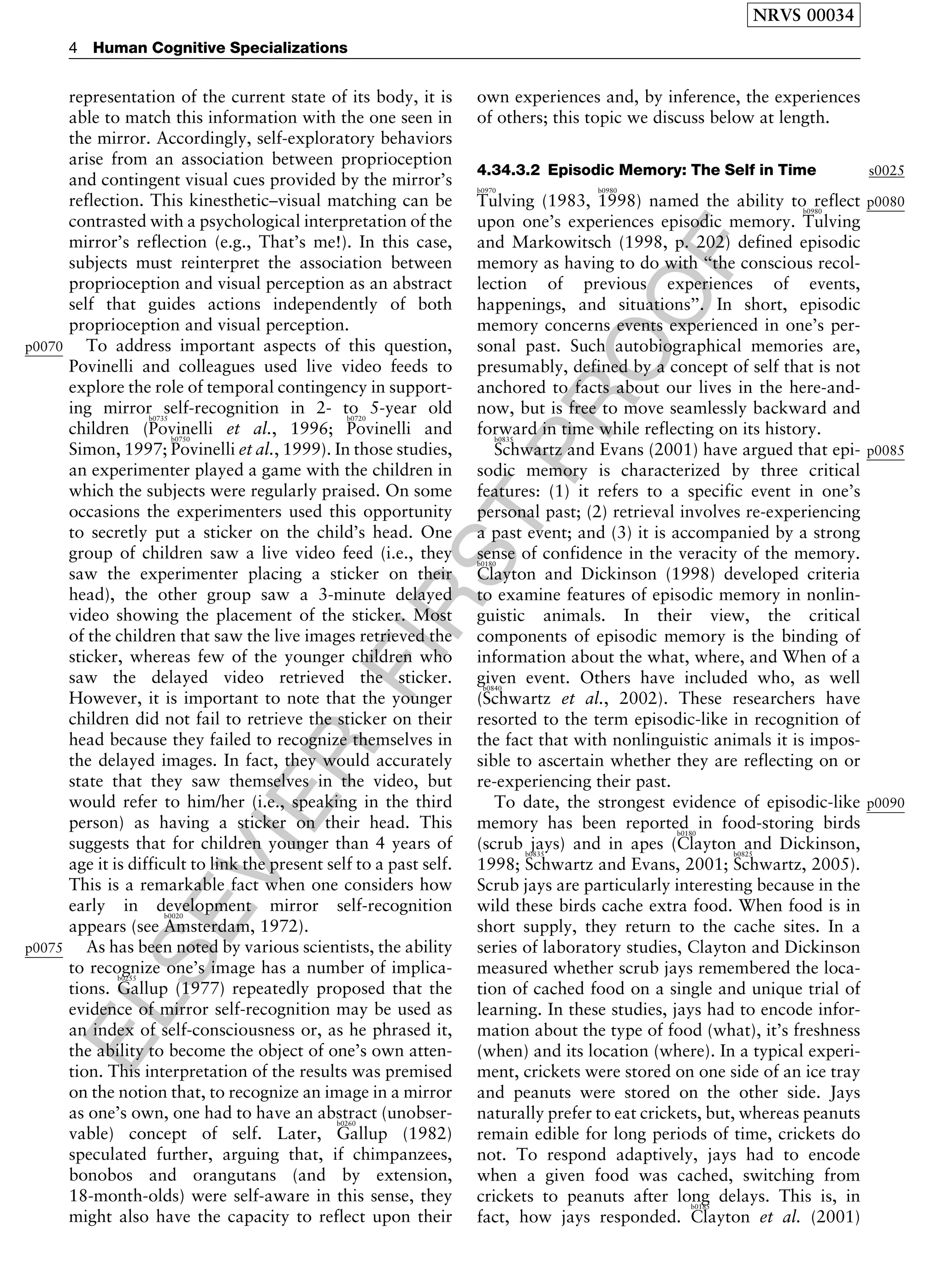
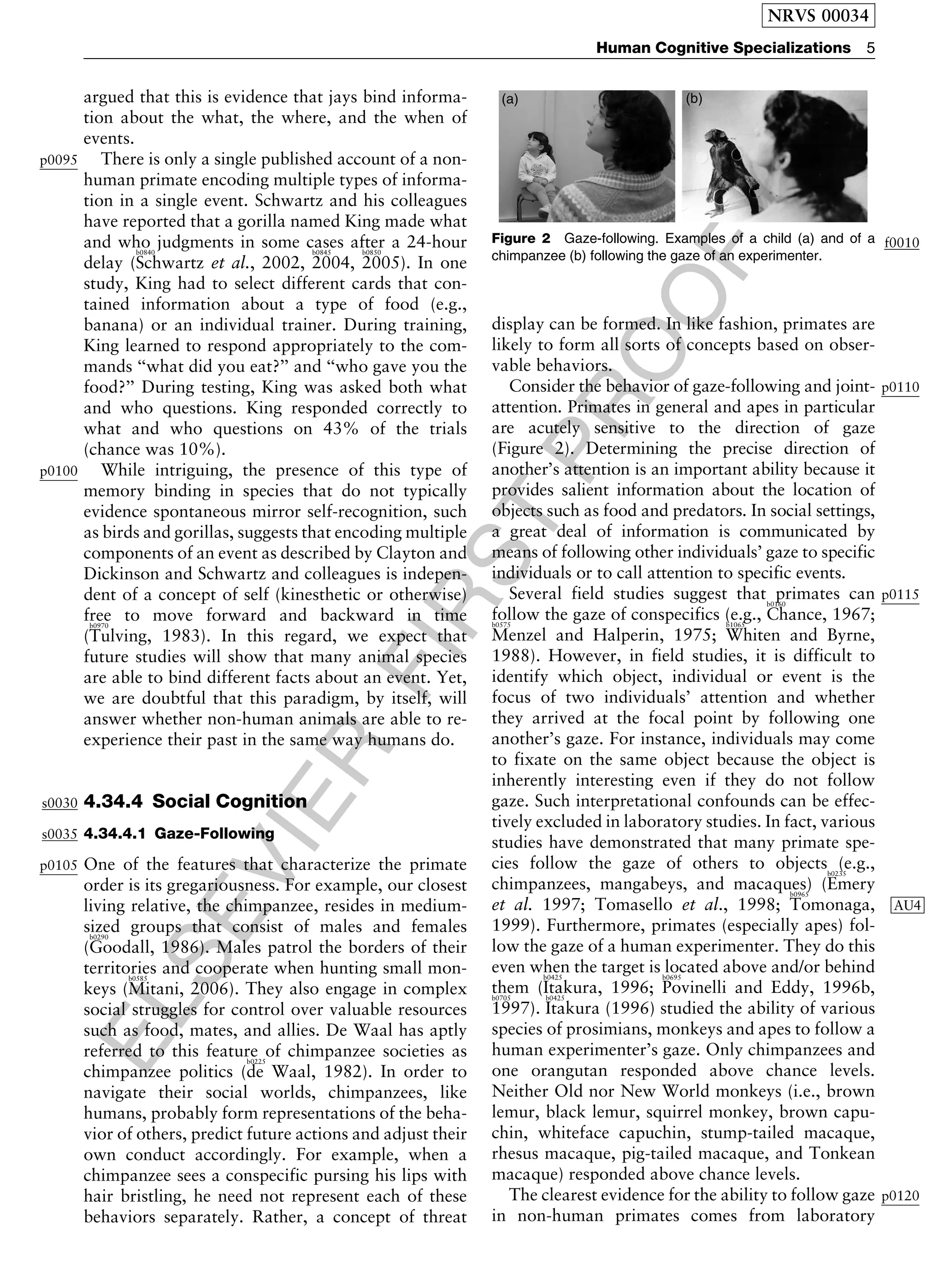
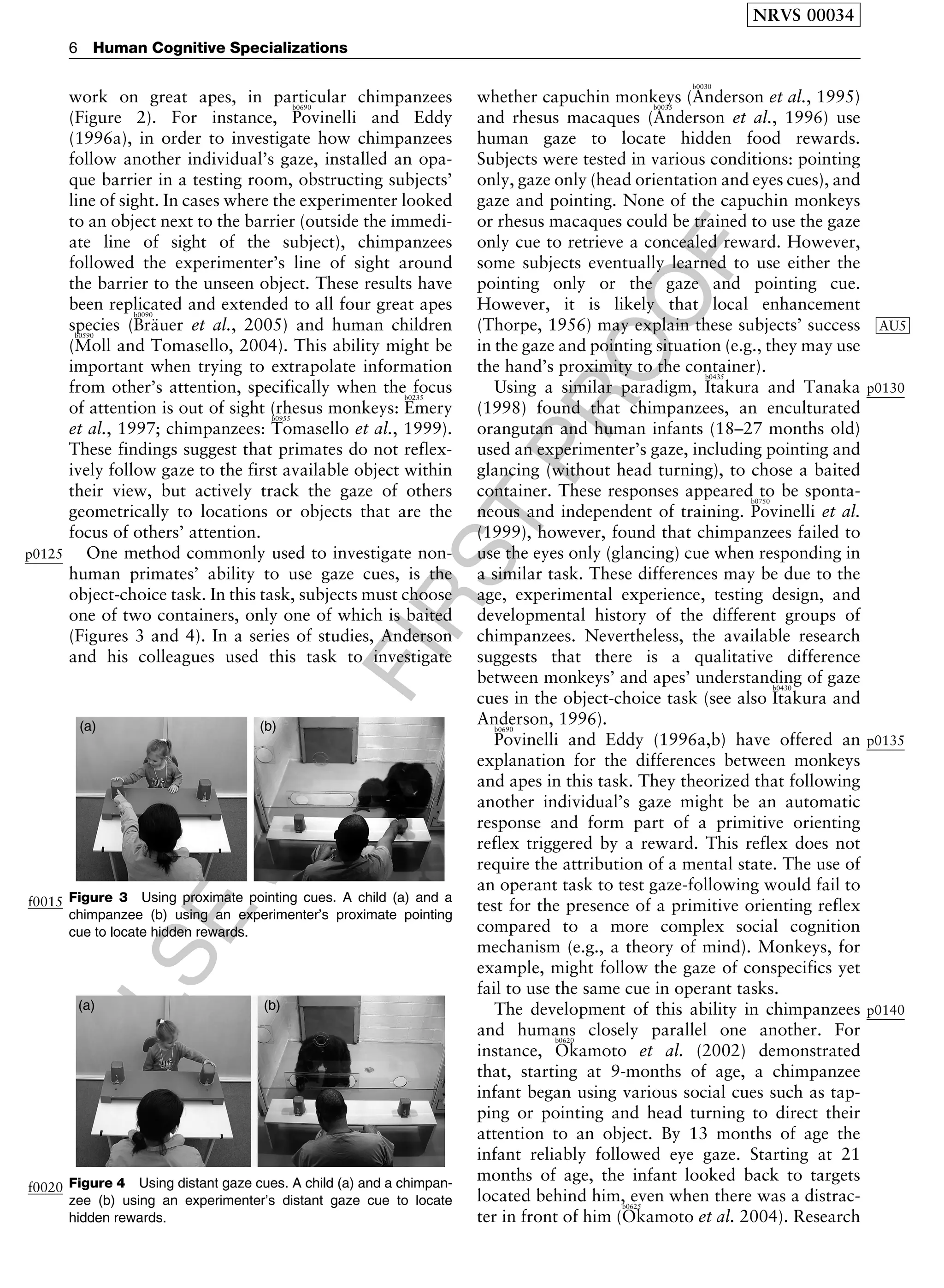
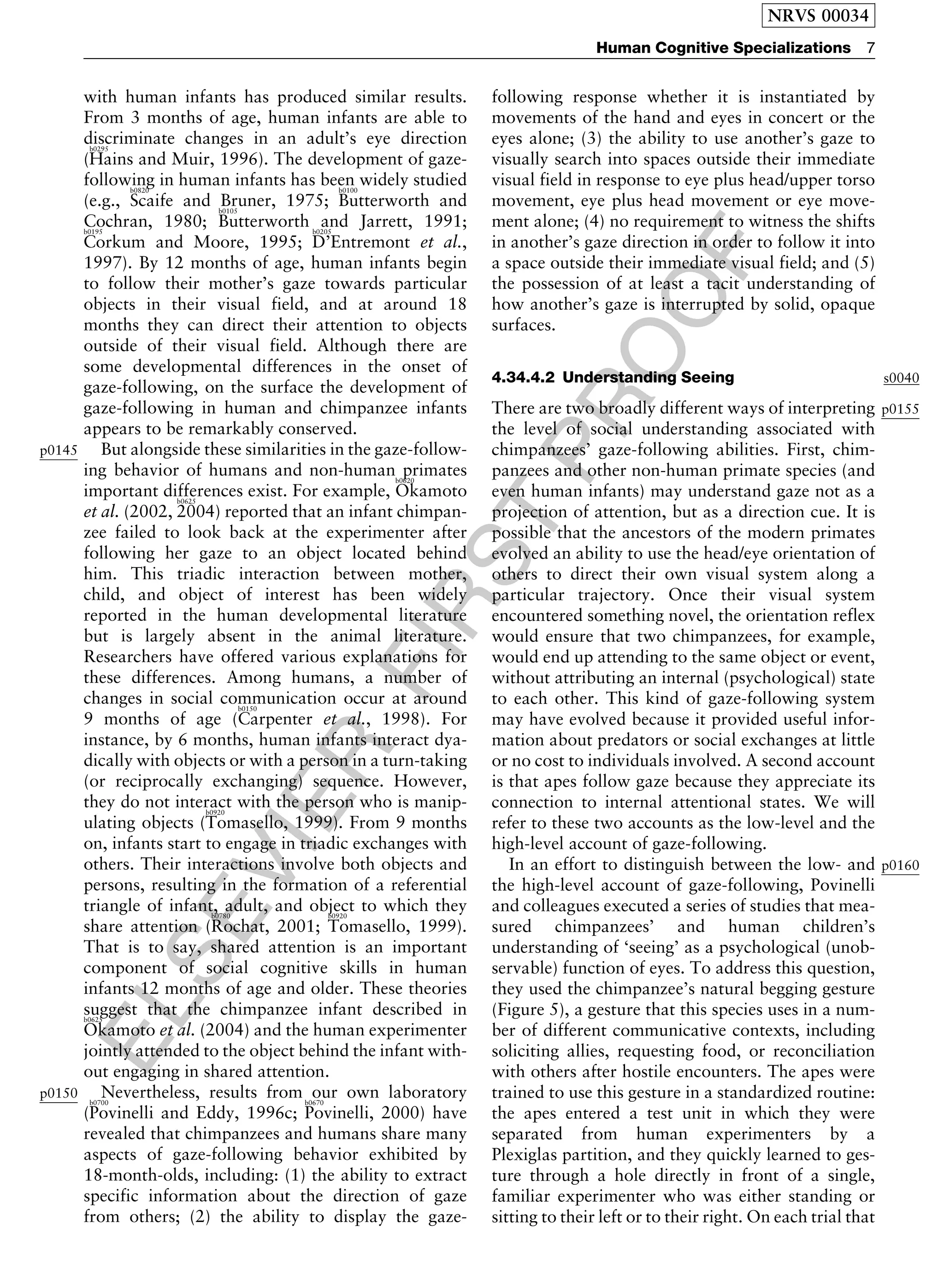
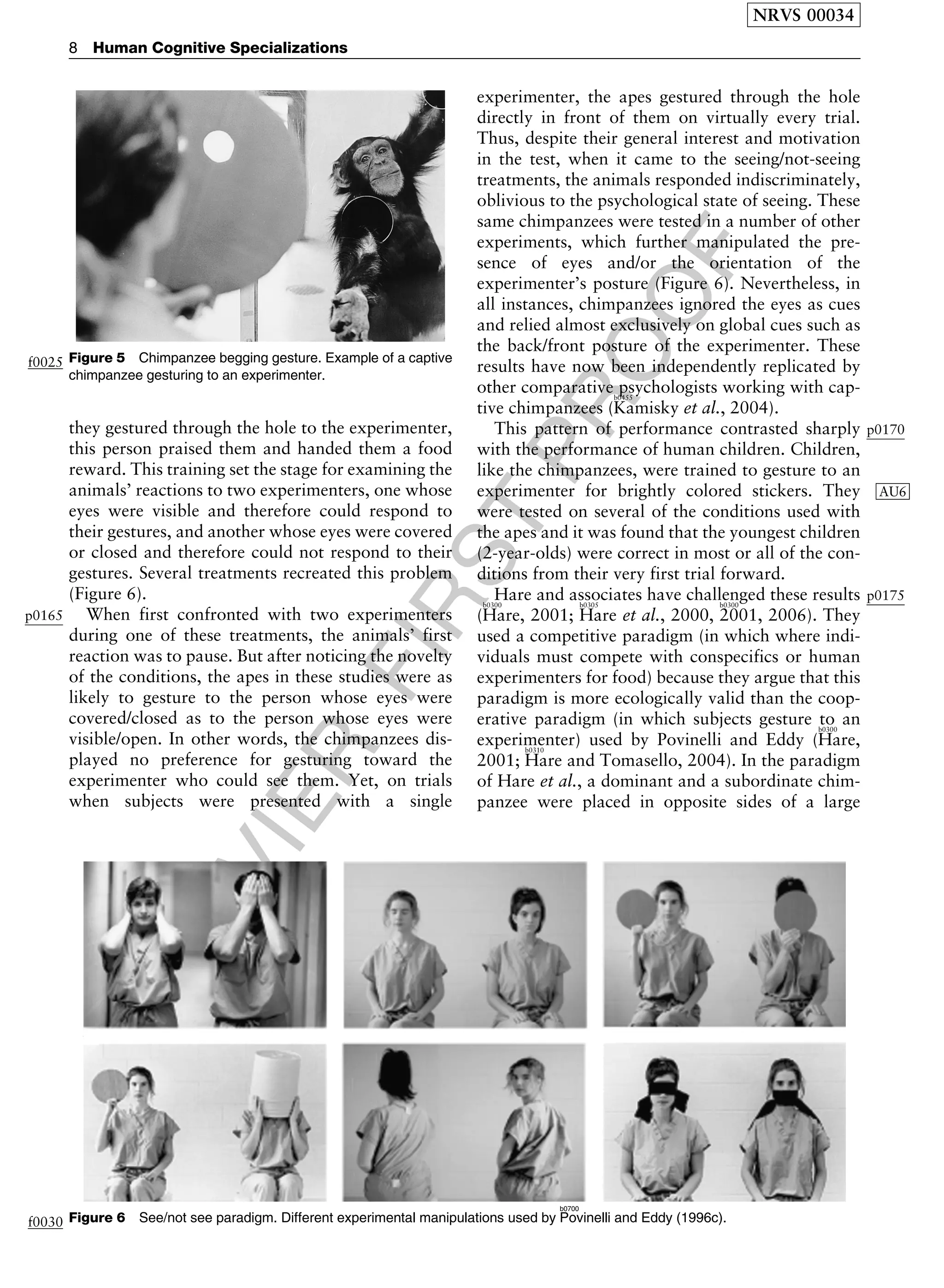
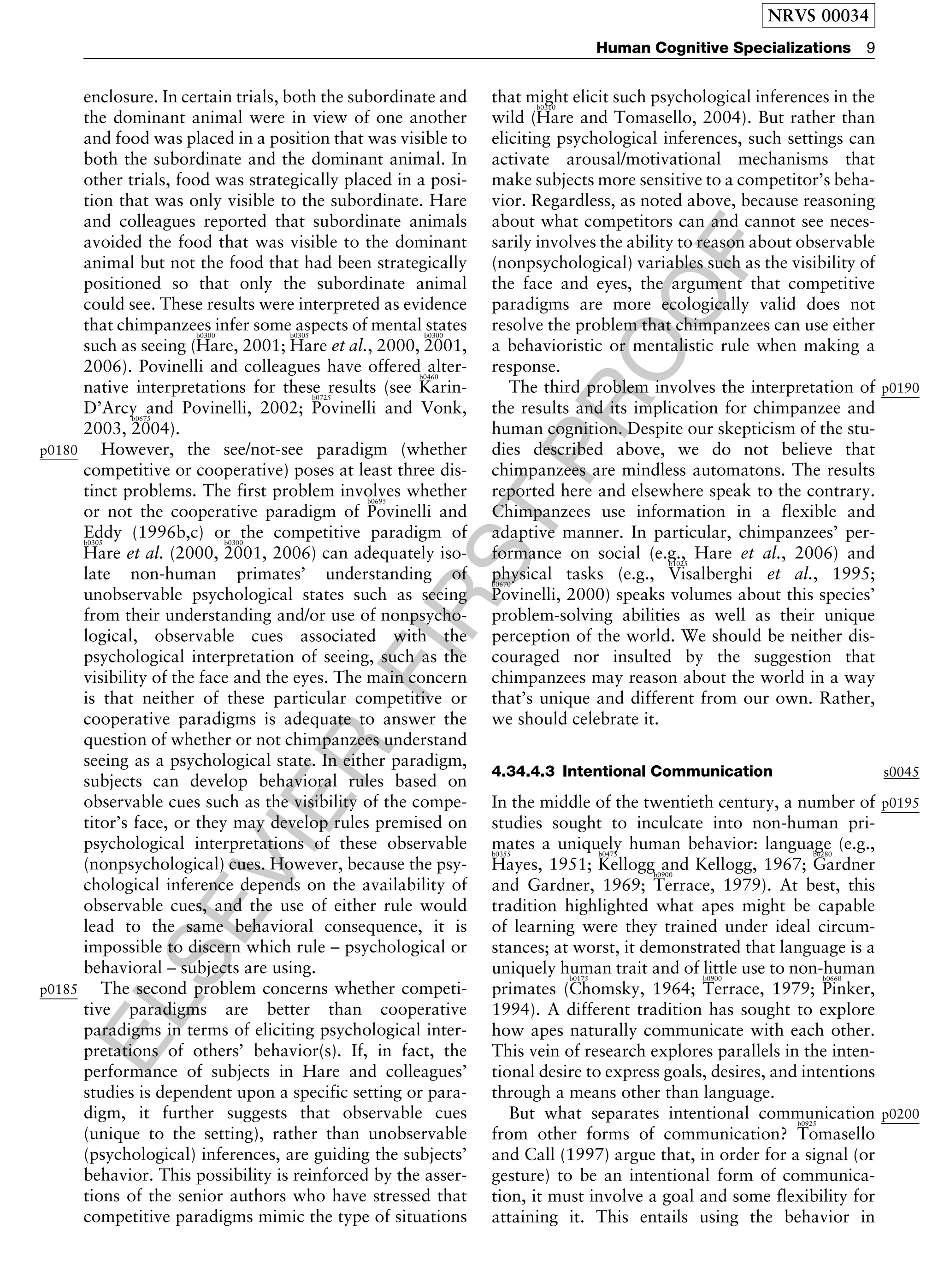
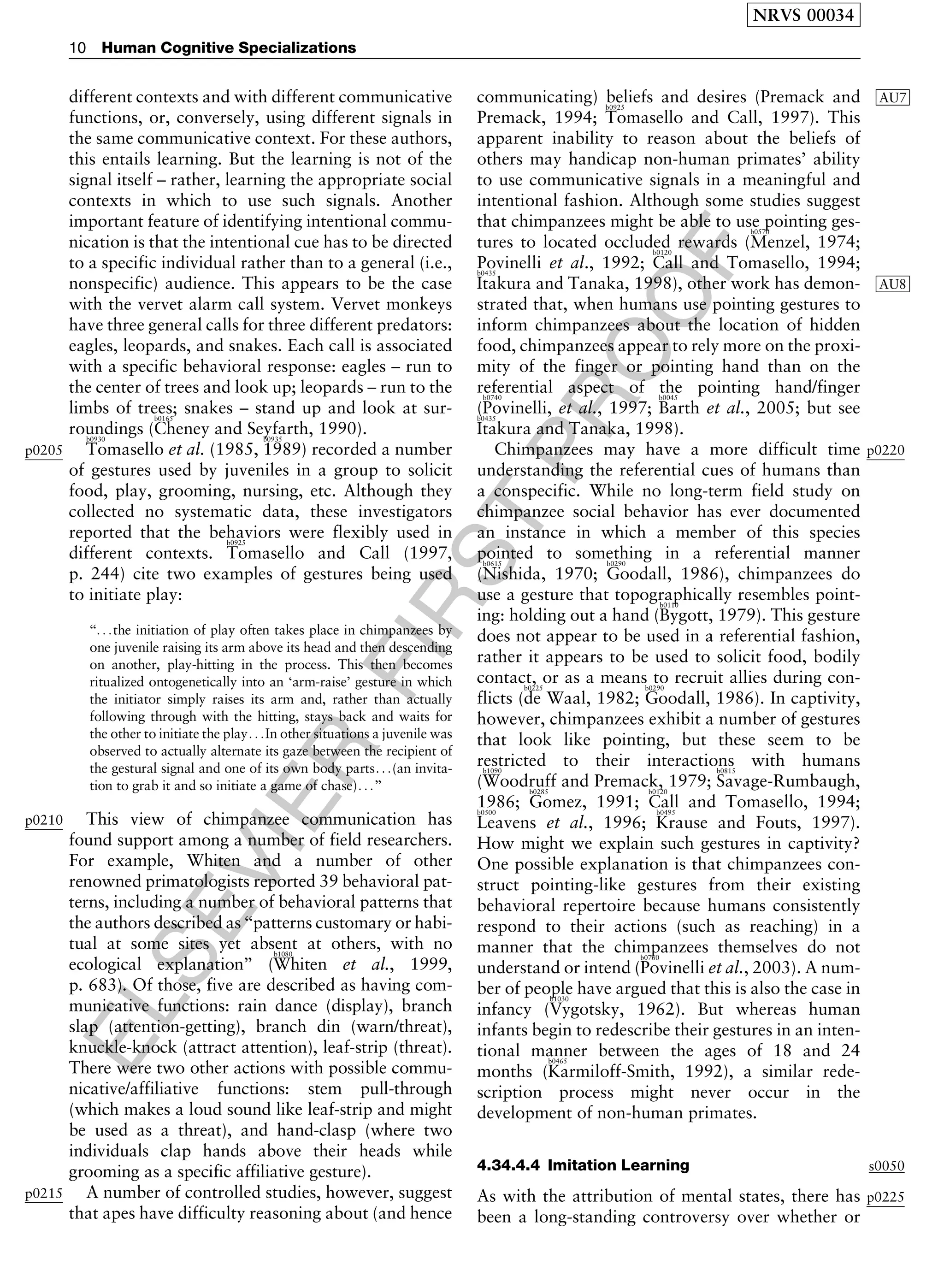
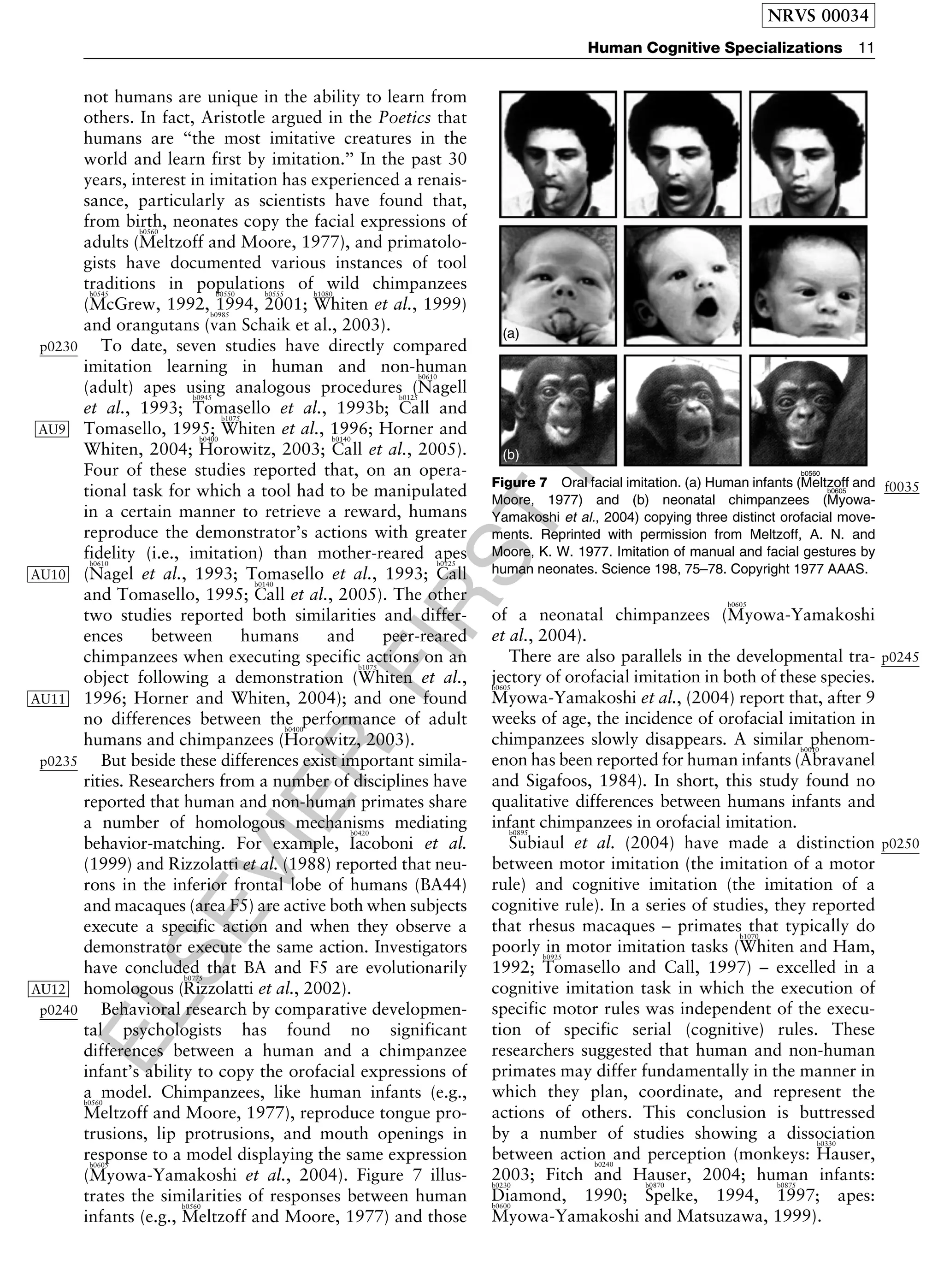
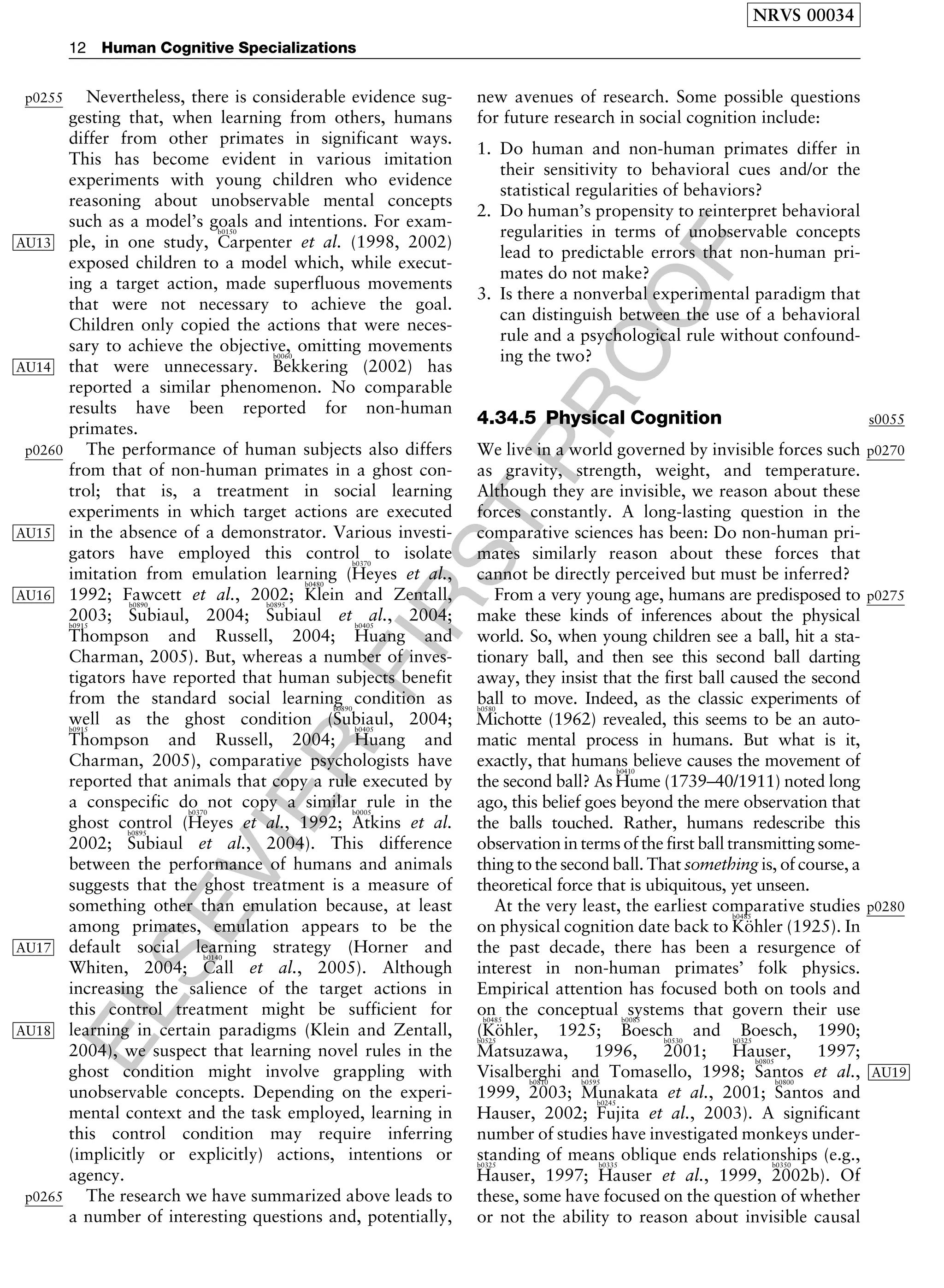
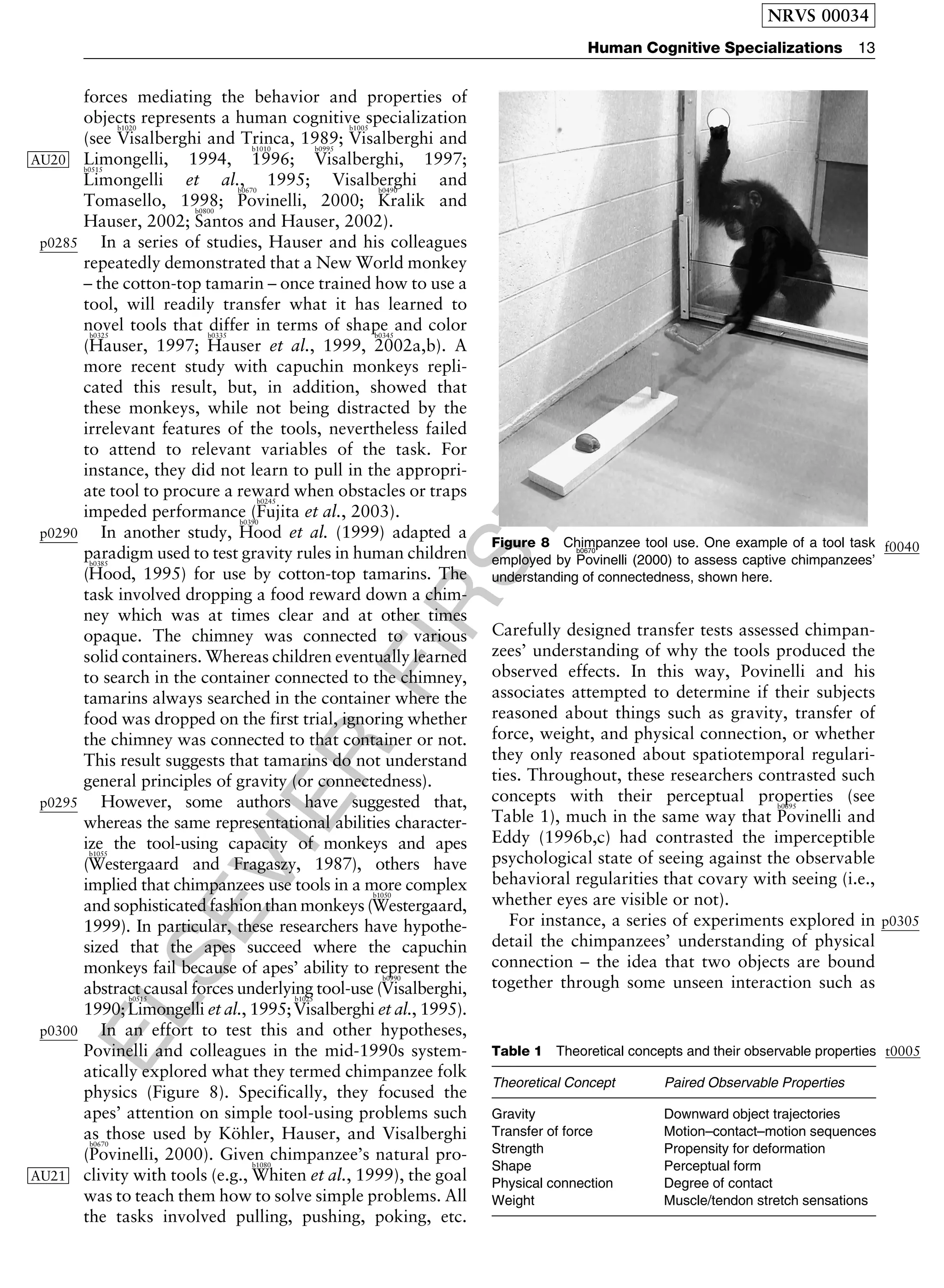
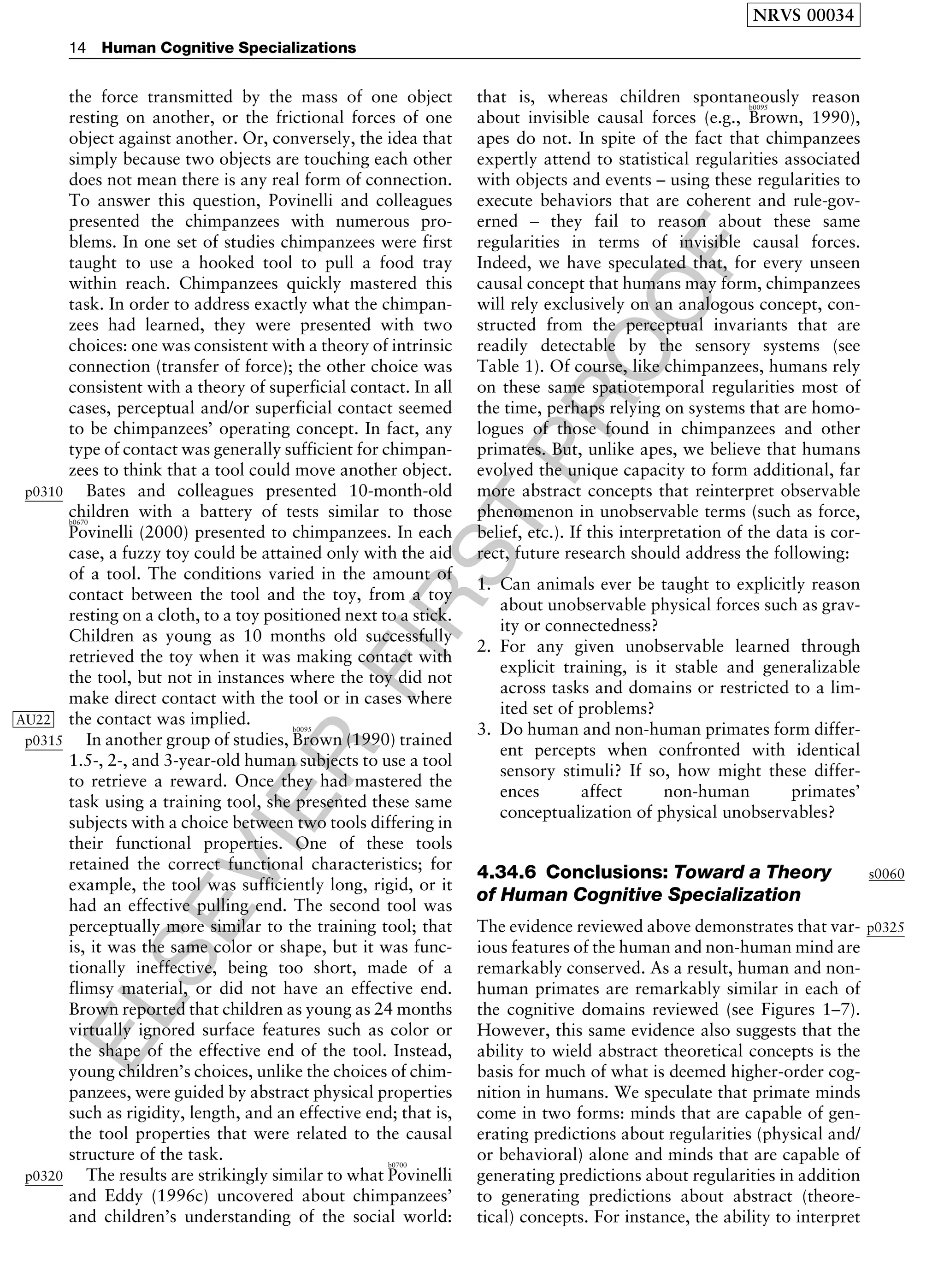
![ELSEVIER
FIRST
PROOF
a given behavior, such as reaching for an object, as
intentional depends on the ability (1) to (1) infer
from observable behavior an unobservable interven-
ing variable, and (2) to use this intervening variable
to describe the behavior in psychological terms. But
note that describing a behavior as reaching (for an
object) need not be additionally redescribed as
wanting (an object). In fact, the same observable
behavior – reaching – may lead to predictions
understood in behavioral terms alone (reach-
ing¼consumption or possession) or in terms of
mental states (reaching¼wanting or needing).
Note that both types of minds describe the behavior
and may respond to an individual reaching for a
desirable object such as food in the same way.
p0330 Importantly, the system that describes observable
phenomena in terms of mental states or physical
forces did not replace the older system that only
analyzed observable features. Instead, this newer
integrated system coevolved with the existing psy-
chological systems of primates. Because the ability
to reason about unobservable concepts such as
minds coevolved with a phylogenetically older beha-
vioral system, we found ourselves in the position of
being able to represent ancient behavioral patterns
in explicitly psychological terms, and of using these
new representations to modulate an existing beha-
vioral repertoire in order to cope with the newly
uncovered mental world in addition to the directly
observable aspects of the social and physical world
with which our ancestors had been coping for mil-
lions of years. If this view of human cognitive
specializations is correct, the most crucial differ-
ences between humans and apes are defined by
cognitive, not behavioral, innovations. This view
contrasts with a number of hypotheses about the
evolution of primate intelligence. First, unlike the
social intelligence hypothesis, our theory does not
assume that the ability to predict behaviors based on
unobservable psychological states produced an
entirely new class of behaviors. To the contrary,
we believe that the nonlinguistic behaviors of organ-
isms with minds that can generate unobservable
concepts and use these concepts to redescribe cer-
tain behaviors do not qualitatively differ from the
behaviors of organisms with minds that can gener-
ate only observable concepts. Second, the ecological
(e.g.,
b0630
Parker and Gibson, 1977,
b0635
1979) and technical
intelligence hypothesis (
b0115
Byrne, 1997;
b0630
Parker and
Gibson, 1977,
b0635
1979), which argues that challenges
in the physical environment favor unique behavioral
and cognitive traits, has the same limitations. As in
the social domain, selection likely favored the ability
to successfully and accurately interpret the observa-
ble statistical regularities that characterize objects in
the environment (e.g., flowering plants or tools). We
agree with the assessment of
b0115
Byrne (1997, p. 293)
that, ‘‘Rapid learning and efficient memory, having
evolved because of social [and physical] profits, evi-
dently also allow benefits in quite different, non-
social tasks.’’ But we do not agree that apes’ unique
technical abilities requires the evolution of an addi-
tional system that reinterpret spatiotemporal
regularities in terms of unobservable forces. The
sophisticated behaviors that characterize apes in
general requires, ‘‘efficient learning and large mem-
ory capacity. . .and possession of theory of mind [or
a system for representing unseen forces] is not neces-
sary for the case’’ (
b0115
Byrne, 1997, p. 292).
p0335The ability to reinterpret observable phenomena
in terms of unobservable concepts may depend on a
specific type of inference which the philosopher
Charles Sanders Pierce called retroductive infer-
ences. For Pierce, ‘‘Retroduction comes first and is
the least certain and. . .the most important kind of
reasoning. . .because it is the only kind of reasoning
that opens up new ground’’ (as cited by
b0470
Kehler,
1911). Pierce viewed retroduction as fundamental
to the scientific enterprise because it depended upon
the development of hypotheses about observable
phenomena. Elsewhere (e.g.,
b0685
Povinelli and
Dunphy-Lelii, 2001;
b0725
Povinelli and Vonk, 2003;b0675
Povinelli, 2004), it has been argued that there is a
difference between a mind that predicts events and
one that seeks to explain them. But, of course,
there’s nothing trivial about predictions. Note that
predictions come in two varieties: forward (e.g.,
classic conditioning), and backward (e.g., descrip-
tive). If the reinterpretation hypothesis is correct, we
can imagine, on the one hand, a mind that responds
in a predictive manner to events and cues, and, on
the other, a mind that generates rules that makes
predictions (from hypotheses) across domains. In
other words, a mind that engages in retroductive
reasoning.
p0340Thus far we have focused on the aspects of the
conceptual systems of humans that may be unique in
the primate order. But the human conceptual system
may be distinct because fundamental features of the
human peripheral nervous system are unique. As
noted in the introduction of this article, it has been
assumed since time immemorial that the differences
between humans and other primates is not only skin
deep; as a result, physiologists and psychologists
have assumed that basic features of the nervous
system (e.g., receptors and effectors) of primates
do not meaningfully differ. Yet, differences in the
sensory systems of primates will result in the gen-
eration of different percepts. If two organisms form
different percepts from the same sensory experience,
NRVS 00034
Human Cognitive Specializations 15](https://image.slidesharecdn.com/subiauletal2007ach4-150904235747-lva1-app6891/75/Human-cognitive-specilizations-15-2048.jpg)
